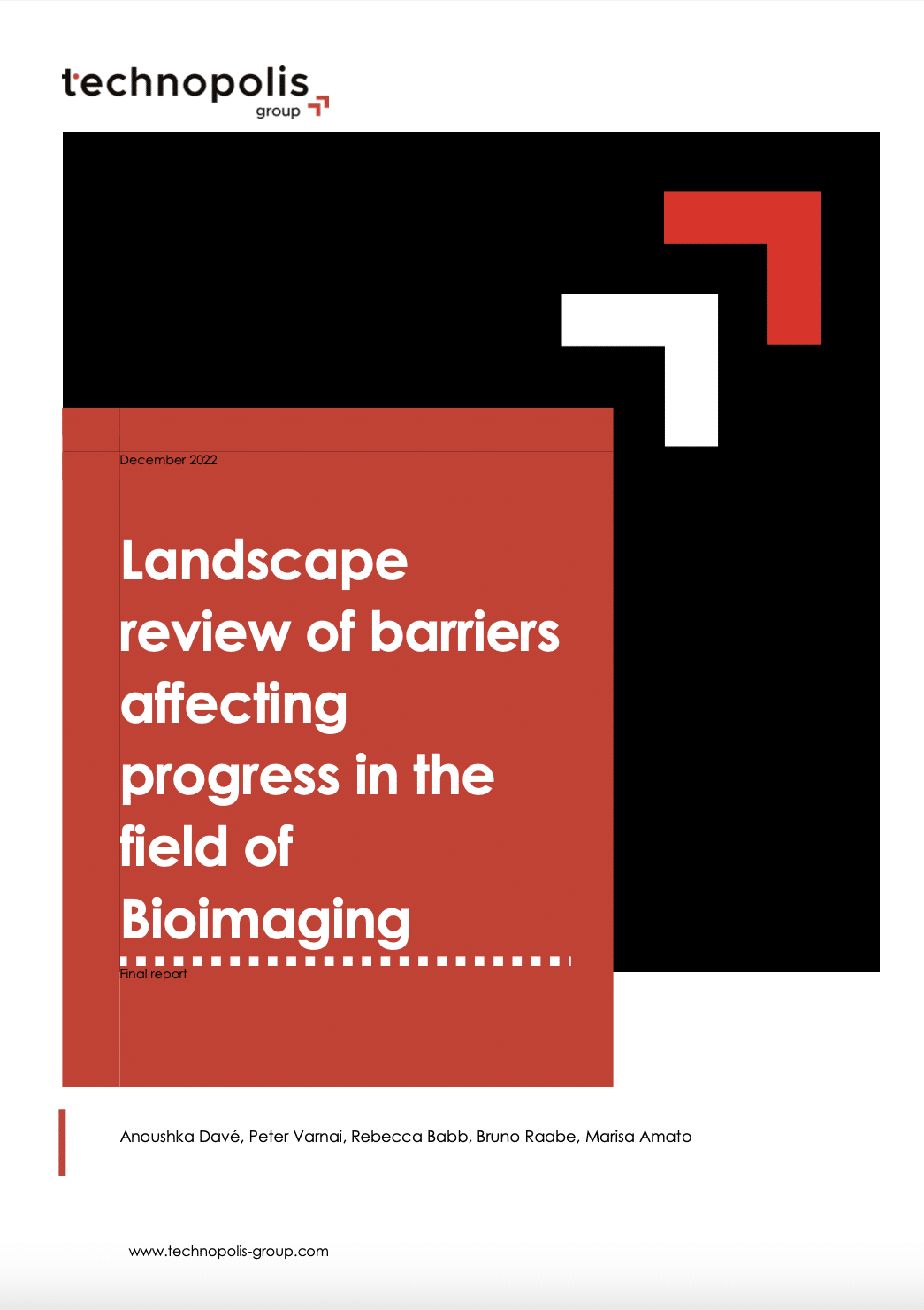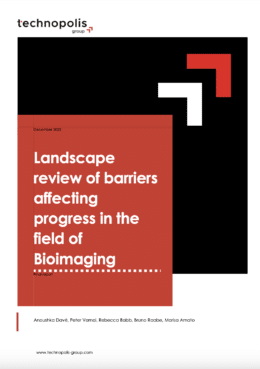Landscape Review of Barriers Affecting Progress in Bioimaging
Publication date: 11 September 2023 | Report language: EN
As they become increasingly powerful and precise, bioimaging technologies are enabling researchers to visualise and measure biological molecules and processes as never before. However, the full potential of new and emerging bioimaging technologies may not be realised owing to barriers in the landscape. Technopolis recently undertook a landscape review for Wellcome to identify what these barriers are and how they are affecting progress in the field of bioimaging.
The landscape review focused on current global trends regarding bioimaging technologies, methodologies and tools, as well as the challenges and barriers affecting progress in bioimaging from the perspective of high-income and low- and middle-income countries. It also explored solutions to address the key barriers, which has led to Wellcome launching new investments in bioimaging.
The review highlighted three key areas in which the next generation of bioimaging approaches are expected to emerge:
- Integration across the scales of life (from atoms all the way to humans) to enable deeper understanding of not only the structures and functions of biological molecules but the wider biological contexts within which they operate
- Combining diverse techniques and methodologies will most effectively enable formulation of new hypotheses and breakthroughs rather than a single bioimaging technique
- Artificial intelligence (deep learning), big data and image analysis techniques will play a significant role in supporting image acquisition, data analysis and data integration, and thereby help push bioimaging techniques forward
In terms of barriers, high-income and low- and middle-income countries face similar challenges. High costs of equipment/infrastructure, access to infrastructure and imaging software along with lack of availability of appropriate technical expertise and data processing/analysis solutions prevent many researchers from accessing bioimaging techniques. Unavailability of the relevant equipment and expertise is a bigger issue in low- and middle-income countries than in high-income countries though.
On the other hand, scientific and technological barriers stemming from inherent limitations of the imaging technology and complex sample preparation requirements can hinder uptake and use of specific bioimaging techniques and limit the scope of what can actually be visualised and interpreted with confidence.
Based on these findings, Wellcome has planned two initial bioimaging funding activities:
- A series of funding calls delivered via a partnership with Global Bioimaging (GBI), a global consortium of imaging infrastructures, to increase access to bioimaging facilities and training in bioimaging methodologies for researchers in low- and middle-income countries
- Funding for developing novel bioimaging technologies and methodologies, starting with a funding call to support collaboration between technology developers and users to tackle some of the biggest methodological barriers affecting the bioimaging field
These funding activities mark the start of a programme of funding that Wellcome hopes will benefit the community, pushing the boundaries of the current state of the art in bioimaging and facilitating equitable access to novel bioimaging technology and the discoveries it promises.
The Technopolis report that contributed to Wellcome’s new funding initiatives for bioimaging can be read or downloaded here. More details of the survey and interview analyses can be found in the annexes:






